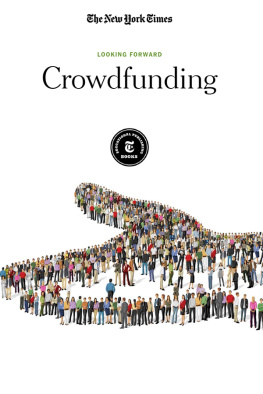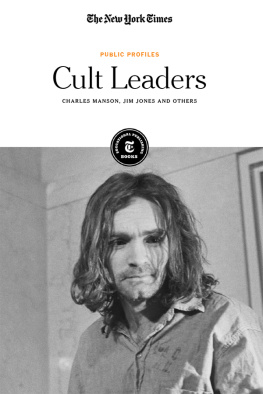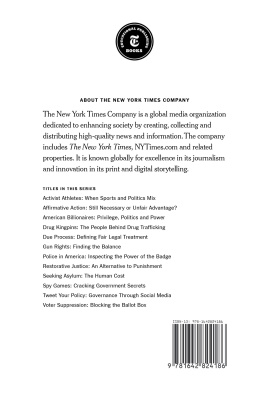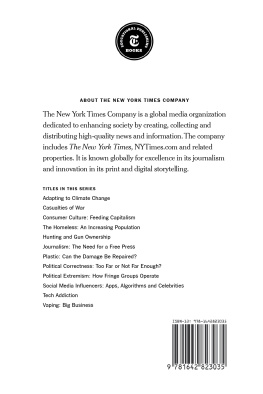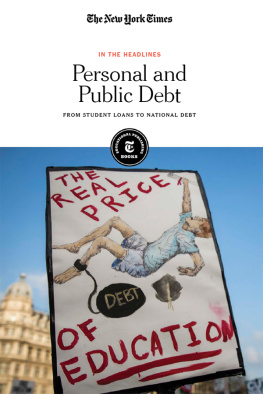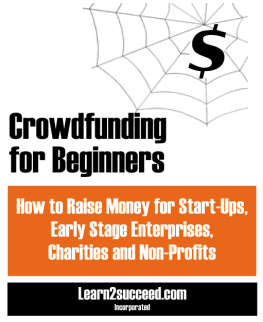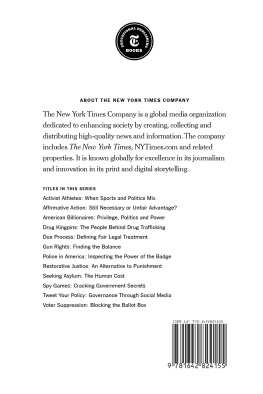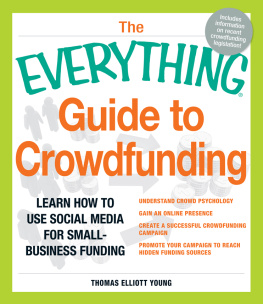Published in 2020 by New York Times Educational Publishing in association with The Rosen Publishing Group, Inc. 29 East 21st Street, New York, NY 10010
Contains material from The New York Times and is reprinted by permission. Copyright 2020 The New York Times. All rights reserved.
Rosen Publishing materials copyright 2020 The Rosen Publishing Group, Inc. All rights reserved. Distributed exclusively by Rosen Publishing.
First Edition
The New York Times
Alex Ward: Editorial Director, Book Development
Phyllis Collazo: Photo Rights/Permissions Editor
Heidi Giovine: Administrative Manager
Rosen Publishing
Megan Kellerman: Managing Editor
Hanna Washburn: Editor
Greg Tucker: Creative Director
Brian Garvey: Art Director
Cataloging-in-Publication Data
Names: New York Times Company.
Title: Crowdfunding / edited by the New York Times editorial staff.
Description: New York : New York Times Educational Publishing, 2020. | Series: Looking forward | Includes glossary and index.
Identifiers: ISBN 9781642822571 (library bound) | ISBN 9781642822564 (pbk.) | ISBN 9781642822588 (ebook)
Subjects: LCSH: Crowd fundingJuvenile literature. | Electronic fund raisingJuvenile literature. | Venture capitalJuvenile literature.
Classification: LCC HG4751.C769 2020 | DDC 658.15224dc23
Manufactured in the United States of America
On the cover: What started as a handful of websites promoting peoples pet projects has transformed into hundreds of platforms that serve as vehicles for not only fund-raising but also product development and market research; Minh Uong/The New York Times.
Introduction
IN THE AGE of social sharing and personal networks, a new form of fund-raising has gained significant traction. Whether you are a paleontologist seeking financial assistance for fossil excavation or a musician looking to fund your first album, people are turning to crowdfunding as a way to realize projects, spread awareness about a cause and even cover medical expenses. Although community-based fund-raising has been around for centuries, crowdfunding refers specifically to funds generated through the Internet. The current model typically involves three parties: the person or group who proposes the project, the community of people that support the venture and the platform that mediates the exchange. Some of the most popular platforms include GoFundMe, Indiegogo, Kickstarter and Patreon.
This method of fund-raising can allow otherwise unfeasible projects to be realized, and allows for a large community of people to be involved and contribute what they can to a cause. This allows for a level of audience engagement that generates enthusiasm for the project and can create a dedicated fan base. Creators will often share updates with their funders, who in turn can provide feedback, allowing for a reciprocal relationship rarely found in other kinds of fund-raising.
Crowdfunding also offers numerous benefits to the project producers beyond financial gain. In addition to generating income, a compelling project can also boost the reputation of the initiators. Even if the fund-raising is unsuccessful, the venture can give them a sense of their audience and the market for their idea. They can even opt to provide pre-release access to content or the opportunity for beta-testing to their funders. Crowdfunding is an especially appealing method for unconventional projects that might not fit the mold for traditional financiers but can gain traction to generate support across a wide range of diverse and enthusiastic people.

Offices for Kickstarter, the popular online crowdfunding website, at their headquarters in New York, Sept. 15, 2015.
Crowdfunding has been utilized for a wide variety of entrepreneurial projects, and this volume designates four major areas where it has been most prominent. Scientists, researchers and entrepreneurs have used crowdfunding, especially if they have been unsuccessful trying to obtain funds through traditional methods such as foundation grants. Community-sourced funds have been used to produce smart watches, conduct research on lake pollution and build bionic pancreases. Arts and entertainment projects are also common, including the famous example of the fan-backed Veronica Mars reunion film, which broke several fund-raising records in 2012 and demonstrated the power of passionate fans in a crowdfunding context. Even political activism and philanthropy endeavors have benefited from crowdfunding, raising funds for refugees and victims of natural disasters or mass shootings.
Gaining traction and controversy in more recent years are personal crowdfunding campaigns. Asking for support from the community to cover medical care, a memorial service, education expenses or even a much-needed vacation has become increasingly common. Crowdfunding as a tool can create a casual and accessible environment where people in need feel they can ask, and those that can help may do so. The lack of accountability and relative anonymity of those asking for help, however, means the funds generated for a certain cause may in fact be used for something else, or even the heartwarming story used as an appeal could be false.
This is one major way that crowdfunding attracts controversy, but it is not the only one. Celebrities like Zach Braff and Spike Lee have attracted debate when asking for help funding their projects, as many consider it in poor taste for the rich and famous to solicit funds from the crowd. Established celebrities likely have access to more traditional forms of financing, and their presence on platforms like Kickstarter can take space and attention away from first-time project producers in more dire need. Their presence on these sites, however, can widen the donor pool, and may encourage people to patronize other crowdfunded projects.
The rapid rise of crowdfunding is a complex issue, and it is undeniable that many innovations we enjoy today would not exist without this method of fund-raising. As social media and networking continue to be omnipresent in contemporary culture, it is clear that crowdfunding is here to stay, though its structure will likely change and adapt alongside innovations in science, technology, the arts and activism.
CHAPTER 1
Funding Science, Technology and Start-Up Companies
In recent years, scientists, researchers and entrepreneurs have turned to crowdfunding to get their projects off the ground, especially when traditional methods of financing have been unsuccessful. In 2016, a new rule was established allowing anyone to risk $2,000 a year or more investing in small companies in exchange for a stake in the business. This ruling represents a major shift toward accessible investing for a more diverse group not just the wealthy fueling a greater range of crowdfunded research and products. This chapter details a variety of crowdfunded ventures in the realms of science, technology and emerging companies from 2012 through 2017.
Young Scientists Embrace Crowdfunding
BY KELLY SLIVKA | MAY 29, 2012
CROWDFUNDING, OR APPEALING to the online community for funds for personal projects, seems to be thriving. One of the best-known platforms is Kickstarter, which generally features projects that are creative in nature musicians seeking to record an album, for example, or inventors pursuing an idea.

